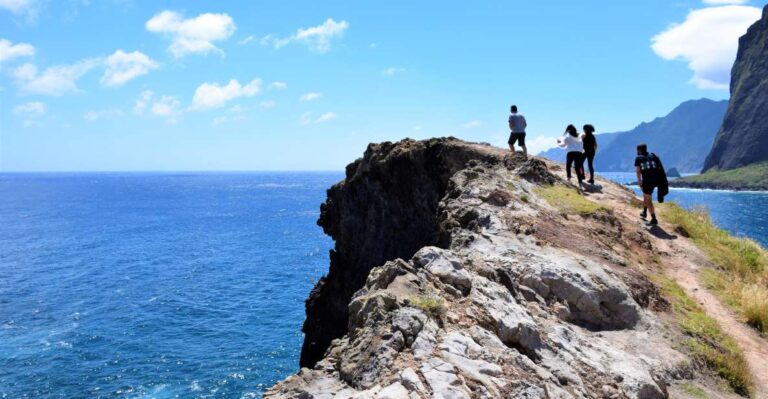Towering over the Pacific Northwest, Mount Rainier National Park beckons visitors to explore its awe-inspiring landscapes through an immersive audio tour. Narrated by expert guides, the tour leads travelers on an engaging journey through the park’s diverse ecosystems, from dense forests and cascading waterfalls to vibrant alpine meadows. As visitors navigate the park’s trails, they’ll uncover the dynamic geology, indigenous history, and abundant wildlife that make this iconic destination a must-visit. With breathtaking vistas of the majestic 14,410-foot peak, the audio tour offers a unique opportunity to truly connect with the natural wonders of Mount Rainier. Get ready to embark on an unforgettable adventure that will leave you captivated by the park’s rich tapestry of stories.
Key Points

- Mount Rainier National Park offers an audio tour guide that leads visitors through the park’s awe-inspiring landscapes, including towering peaks, ancient forests, and cascading waterfalls.
- The audio tour highlights the park’s diverse flora and fauna, providing insights into the region’s rich wildlife, from majestic black bears to elusive white-tailed ptarmigan.
- The audio guide explores the park’s extensive trail system, guiding visitors through a variety of hiking experiences, from the rigorous Skyline Trail to the serene Grove of the Patriarchs Trail.
- The audio tour includes information about the indigenous history and cultural legacy of the Nisqually, Puyallup, Muckleshoot, and other Native American tribes, enhancing the overall park experience.
- The audio guide features detailed descriptions of the park’s high-country meadows and vibrant wildflowers, such as the Edith Creek Basin and the Paradise Meadows, offering a breathtaking sensory experience.
Discover Breathtaking Vistas and Forests
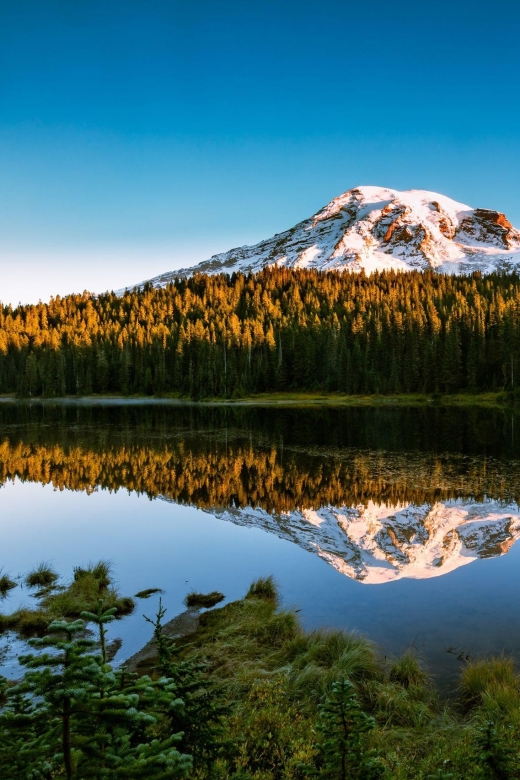
From the moment visitors set foot in Mount Rainier National Park, they’ll be captivated by the park’s breathtaking vistas and pristine forests.
Towering peaks, like the majestic 14,410-foot Mount Rainier, dominate the landscape, casting dramatic shadows across the valleys below.
Lush, ancient forests of towering evergreens, such as Douglas fir and western red cedar, line the winding roads, offering a peaceful respite from the outside world.
Cascading waterfalls, like the thundering Narada Falls and the serene Christine Falls, add to the park’s natural splendor, inviting visitors to pause and take in the beauty.
The audio tour will guide you through these awe-inspiring landscapes, allowing you to fully learn about the park’s stunning natural wonders.
Witness the Iconic Paradise Visitor Center
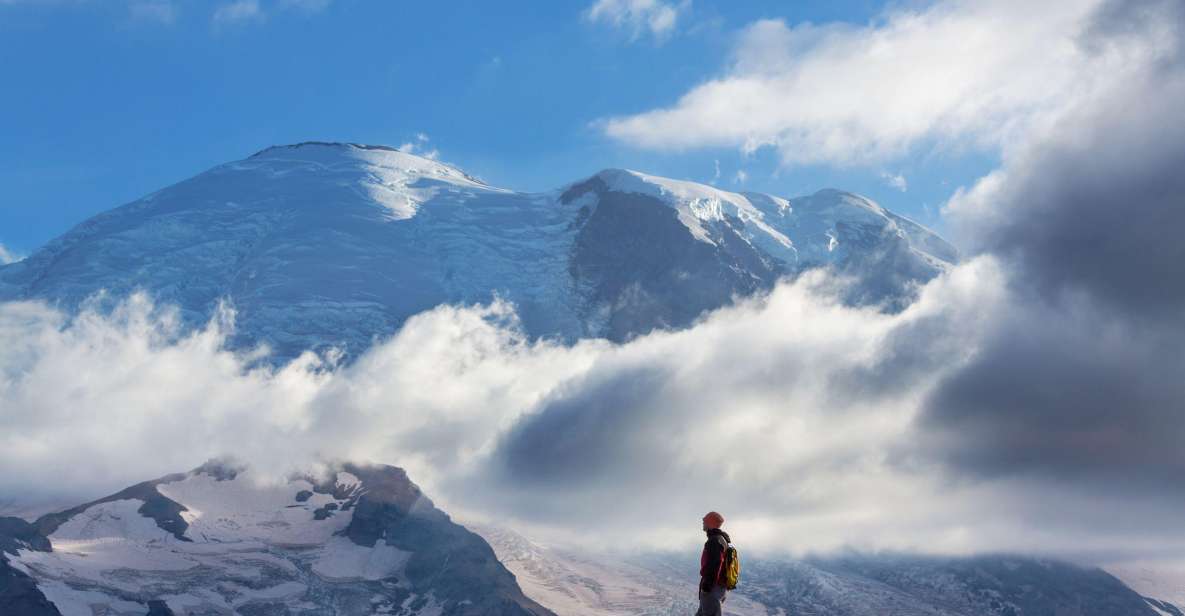
As visitors ascend the winding road to Paradise, the iconic Paradise Visitor Center comes into view, its grand architecture standing in majestic contrast against the backdrop of the towering Mount Rainier. The center’s observation deck offers unparalleled panoramic vistas, allowing guests to witness the sun’s golden rays cascading over the park’s snow-capped peaks and glaciers, an unforgettable experience that sets the tone for the journey ahead.
| Feature | Description |
|---|---|
| Elevation | 5,400 feet |
| Exhibits | Showcase the park’s flora, fauna, and geology |
| Dining | Savor local cuisine at the Paradise Inn |
| Hiking Trails | Access to the Skyline and Deadhorse Creek Trails |
Marvel at Cascading Waterfalls
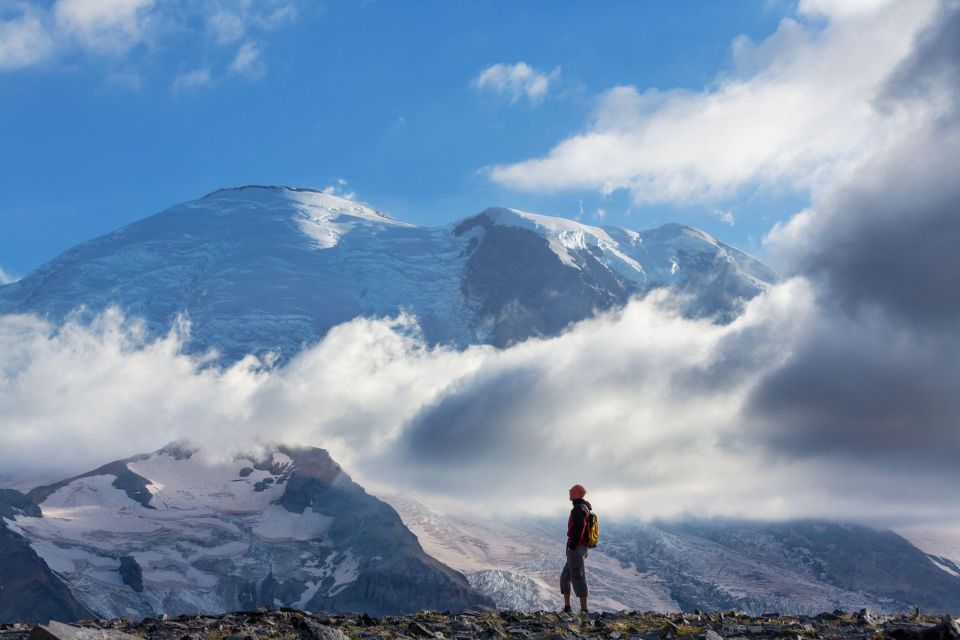
Visitors are often mesmerized by the cascading waterfalls that grace Mount Rainier National Park, each one showcasing the raw power and beauty of the park’s natural wonders.
One of the most impressive is Narada Falls, a 168-foot-tall cascade that roars over a rocky cliff. Another highlight is Christine Falls, a picturesque waterfall framed by a historic stone bridge.
As you stand before these natural masterpieces, you can’t help but feel a sense of awe and reverence. The thundering water, the mist that dances in the air, and the lush, verdant surroundings create an unforgettable sensory experience.
These waterfalls are a testament to the park’s dynamic geological history and a must-see for any visitor.
Wildlife Sightings and Observation
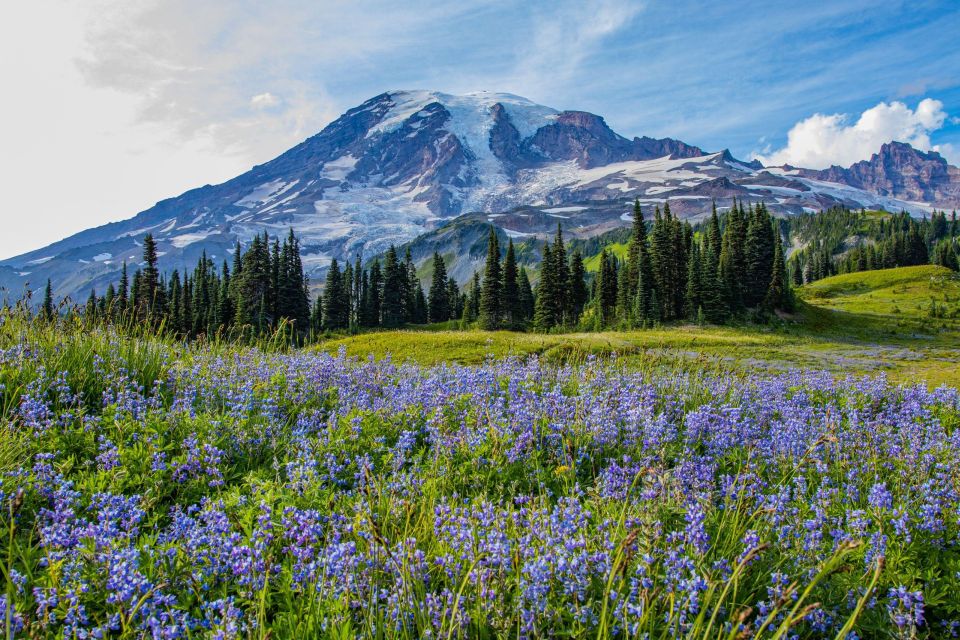
Where can visitors spot the park’s iconic wildlife, from majestic black bears foraging in the meadows to nimble-footed marmots scurrying between the rocky outcrops? Keen-eyed observers may catch glimpses of these captivating creatures as they navigate the diverse habitats of Mount Rainier National Park. Hikers may encounter herds of Roosevelt elk grazing in the valleys, while a keen eye and patience may be rewarded with sightings of elusive species like the white-tailed ptarmigan. The park’s forests and alpine zones provide homes for a variety of mammals, birds, and insects, each playing a vital role in the delicate ecosystem. With careful observation and respect for wildlife, visitors can enjoy the park’s thriving natural communities.
| Animal | Location | Behavior |
|---|---|---|
| Black Bear | Meadows | Foraging |
| Marmot | Rocky Outcrops | Scurrying |
| Roosevelt Elk | Valleys | Grazing |
| White-tailed Ptarmigan | Alpine Zones | Elusive |
Exploring the Park’s Trails
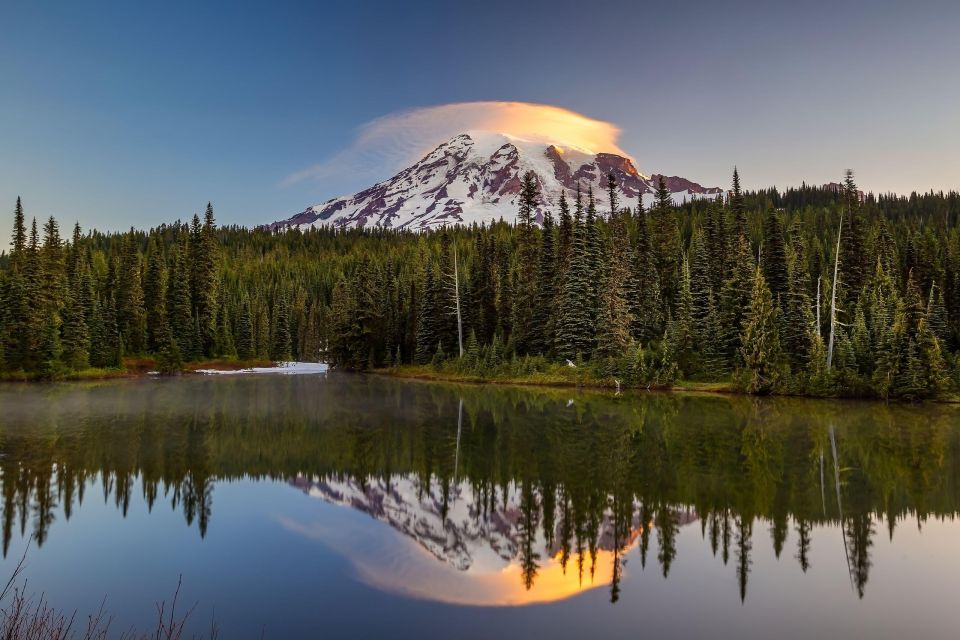
Laced throughout Mount Rainier National Park’s diverse terrain, a network of well-maintained trails beckons adventurous hikers to explore the park’s breathtaking vistas and alpine environments. From easy strolls to challenging ascents, the park’s trails offer a variety of experiences to suit all skill levels.
Discover the serene Naches Peak Loop, which winds through subalpine meadows and provides panoramic views of the iconic Mount Rainier.
Challenge yourself on the Skyline Trail, a rigorous hike leading to the summit of Camp Muir, a popular mountaineering base camp.
Enjoy the lush, old-growth forests on the Grove of the Patriarchs Trail, home to towering, centuries-old Douglas fir trees.
Enjoy the tranquility of the Ohanapecosh River on the Silver Falls Trail, where you’ll be rewarded with the sight of a stunning 62-foot waterfall.
Connecting With the Indigenous History
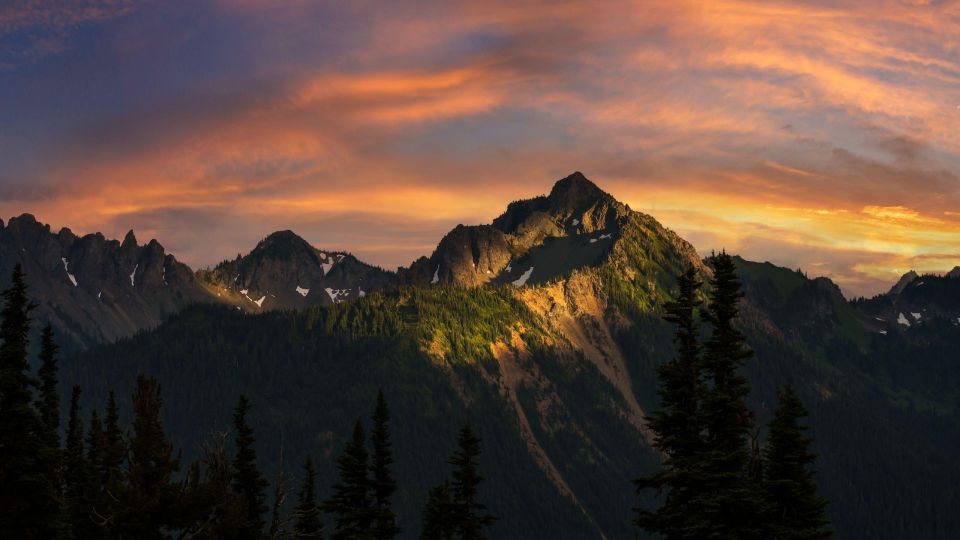
Although Mount Rainier National Park captivates visitors with its natural splendor, the park’s rich indigenous history also offers a profound connection to the land.
The Nisqually, Puyallup, Muckleshoot, and other Native American tribes have maintained a deep-rooted relationship with this iconic mountain for thousands of years, shaping their cultural traditions, spiritual beliefs, and everyday lives.
Travelers can learn about the park’s First Nations heritage by visiting sites like the Longmire Museum, which showcases historical artifacts and interactive exhibits. Plus, guided tours led by local indigenous interpreters provide first-hand insights into the tribes’ enduring connection to Mount Rainier, allowing visitors to develop a richer understanding of the land’s significance.
Embracing this cultural legacy enriches the overall park experience.
High-Country Meadows and Wildflowers
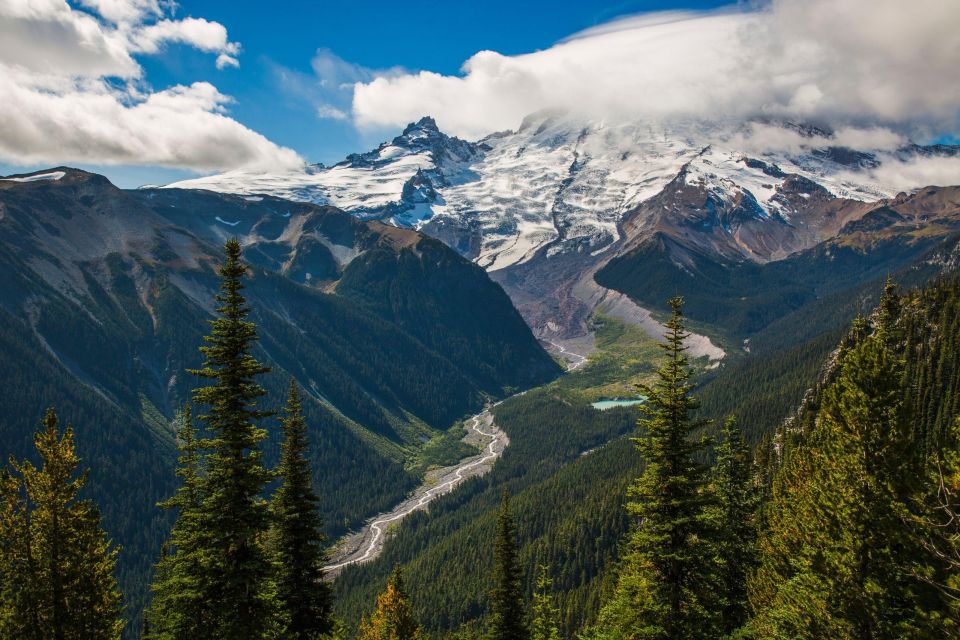
The high-country meadows of Mount Rainier National Park come alive with a vibrant tapestry of wildflowers during the summer months, captivating visitors with their serene beauty and diverse blooms. From the iconic fields of lupine and Indian paintbrush to the delicate alpine asters and fragrant avalanche lilies, these alpine meadows are a naturalist’s paradise.
Visitors can explore:
- The Edith Creek Basin, where wildflowers carpet the landscape in a stunning display of color.
- The Sunrise Visitor Center, which offers breathtaking vistas of the park’s high-country meadows.
The Skyline Trail, a challenging hike that winds through lush alpine meadows and subalpine forests.
The wildflower-filled Paradise Meadows, a popular destination for photographers and nature enthusiasts alike.
Customizing Your Tour Experience
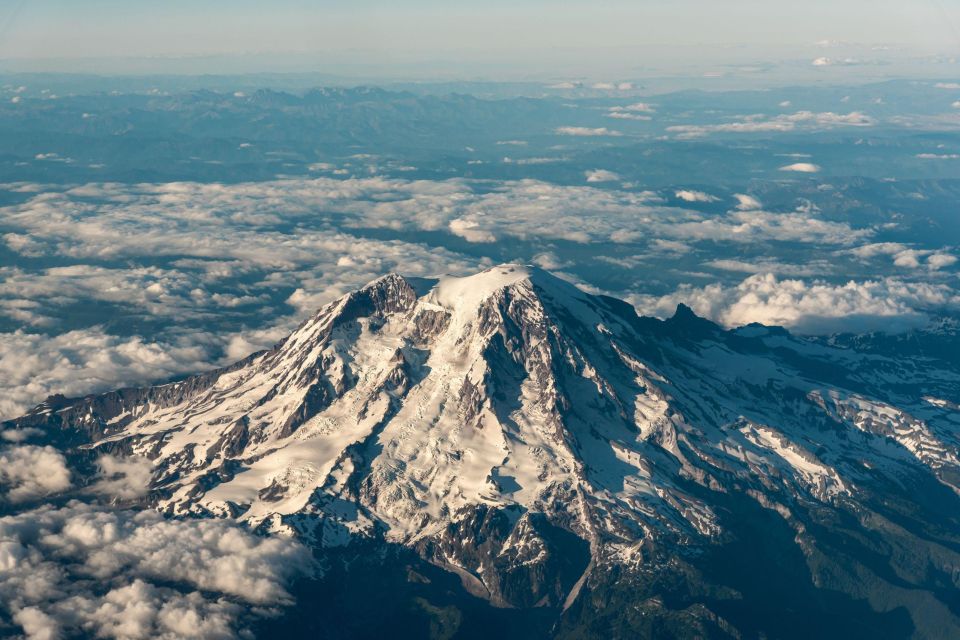
With the Shaka Guide audio tour, visitors can tailor their Mount Rainier experience to suit their preferences, whether they seek an invigorating hike, a leisurely drive, or a photography-focused adventure.
The app’s flexible design allows travelers to start and end the tour at their convenience, ensuring they can maximize their time in the park.
Hikers can explore a variety of trails, from gentle strolls through the wildflower-dotted meadows to more challenging ascents that offer breathtaking vistas.
Alternatively, those seeking a more relaxed experience can simply cruise along the scenic roads, stopping to admire the cascading waterfalls and towering peaks.
No matter their interests, the Shaka Guide tour empowers visitors to craft their perfect Mount Rainier adventure.
Frequently Asked Questions
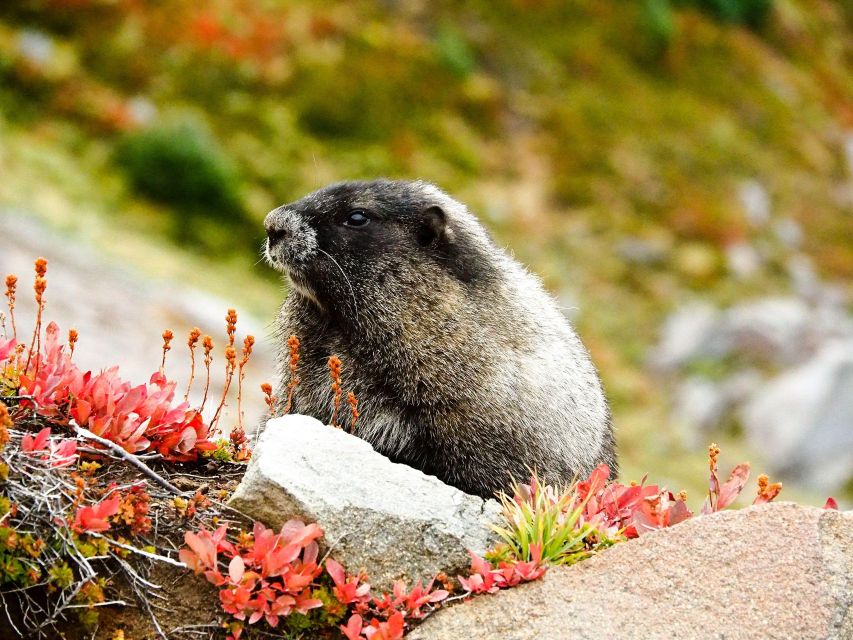
Can I Bring My Pet to the National Park?
Pets are generally not allowed within Mount Rainier National Park, with the exception of service animals. Visitors should leave their furry friends at home to avoid disturbances to wildlife and ensure an enjoyable, safe experience for all.
What Is the Best Time of Year to Visit Mount Rainier?
The best time to visit Mount Rainier is during the summer, from July to September. Visitors can enjoy the vibrant wildflower meadows, warmer temperatures, and reduced snow cover, making it an ideal season for hiking and exploring the park’s natural wonders.
Are There Any Camping Facilities Available in the Park?
Yes, there are several camping facilities within Mount Rainier National Park. Visitors can choose from developed campgrounds, backcountry campsites, and even RV sites. These provide opportunities to take in the park’s natural wonders for an extended stay.
Is There a Fee to Access the Park’s Hiking Trails?
There is a fee to access the hiking trails in Mount Rainier National Park. The park entry fee is $30 per car or $55 for an annual pass, which covers access to all the trails within the park.
Can I Purchase Food and Supplies Within the Park Boundaries?
Visitors can purchase food and supplies within the park’s boundaries, but options are limited. There are a few general stores and visitor center cafes, but travelers are advised to stock up on necessities before entering the park to ensure they have everything they need.
Recap
The Mount Rainier National Park audio tour provides an immersive and enriching experience for visitors.
Listeners are transported through the park’s awe-inspiring landscapes, from towering forests and cascading waterfalls to vibrant alpine meadows.
With expert narration, the tour offers an engaging and informative way to discover the park’s dynamic geology, diverse wildlife, and rich indigenous history, all while enjoying breathtaking vistas of the majestic Mount Rainier.


